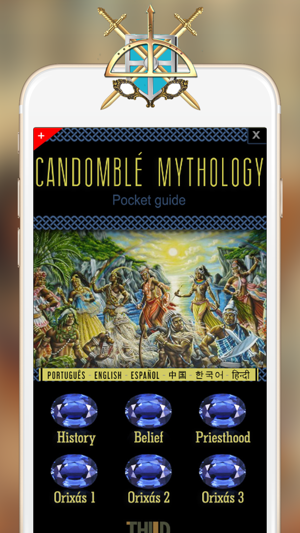價格:免費
檔案大小:17.4 MB
版本需求:系統需求:iOS 8.0 或以後版本。相容裝置:iPhone、iPad、iPod touch。
支援語言:英語

Candomblé (dance in honour of the gods) is a religion, practiced mainly in Brazil by the "povo do santo" (people of the saint). Candomblé officially originated in Salvador, Bahia at the beginning of the 19th century, when the first temple was founded. Although Candomblé is practiced primarily in Brazil, it is also practiced in other Latin American countries, including Argentina, Uruguay, Paraguay, and Venezuela, having as many as two million followers.

Candomblé developed in a creolization of traditional Yoruba, Fon, and Bantu beliefs brought from West Africa by enslaved captives in the Portuguese Empire. Between 1549 and 1888, the religion developed in Brazil, influenced by the knowledge of enslaved African priests who continued to teach their mythology, their culture, and language. In addition, Candomblé absorbed elements of Roman Catholicism and includes indigenous American traditions.

As an oral tradition, it does not have holy scriptures. Practitioners of Candomblé believe in a Supreme Creator called Oludumaré, who is served by lesser deities, which are called Orishas. Every practitioner is believed to have their own tutelary orisha, which controls his or her destiny and acts as a protector. Music and dance are important parts of Candomblé ceremonies, since the dances enable worshippers to become possessed by the orishas. In the rituals, participants make offerings from the mineral, vegetable, and animal kingdoms. Candomblé does not include the duality of good and evil; each person is required to fulfill his or her destiny to the fullest, regardless of what that is.


支援平台:iPhone, iPad
